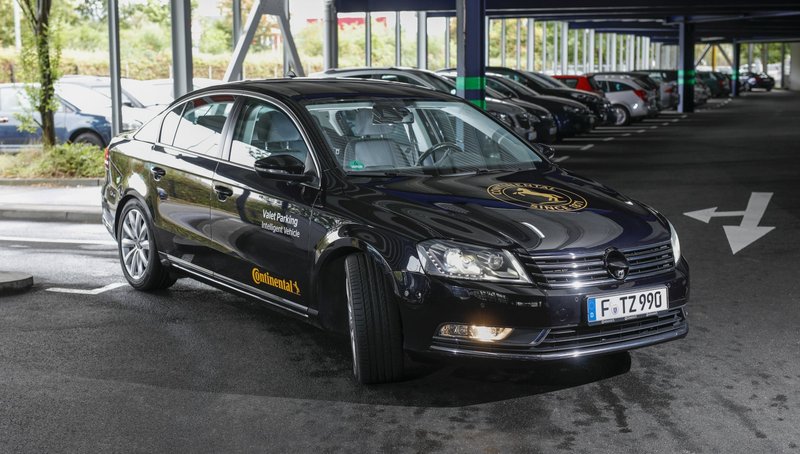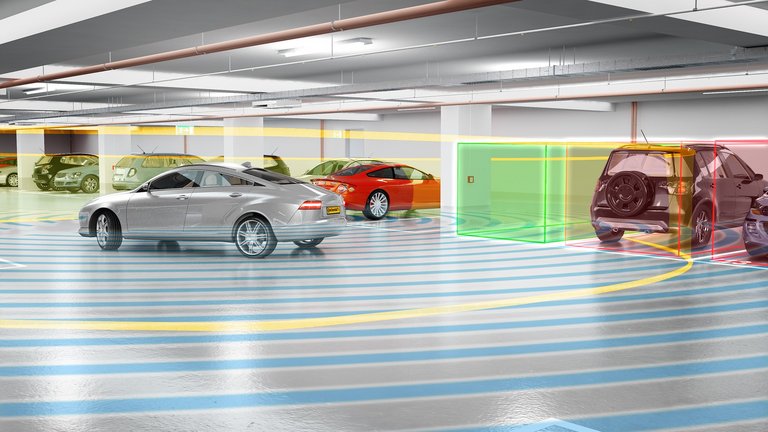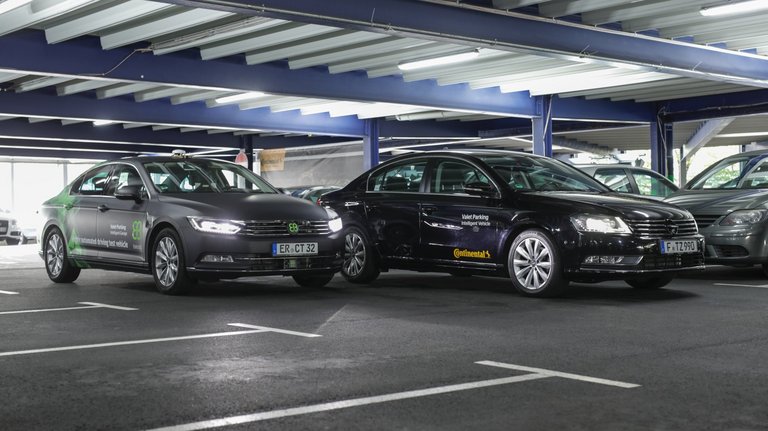Pull Up and Have Your Car Parked for You – Continental Implements Fully Automated Valet Parking
- Continental presents its new fully automated Valet Parking function in a demo vehicle.
- The driver exits their vehicle at a transfer point and lets their vehicle park autonomously. The vehicle also returns to the driver automatically later on upon request.
- Continental will demonstrate this sophisticated function at the IAA in its own company parking garage at the Frankfurt-Rödelheim location.
- Elektrobit (EB) will demonstrate automated valet parking using information received from the cloud.
Frankfurt am Main, Germany, September 14, 2017. A valet parking service can usually be found in front of hotels, airports and restaurants as well as at events and some parking garages, where drivers hand their keys over to an attendant at the entrance. The attendant then finds a parking space, parks the car and brings it back to the transfer point for collection. The technology company Continental has developed an automated solution, which makes it possible for the car itself to perform valet parking.
At the IAA, Continental will be showing how this works in a real vehicle at its location in Frankfurt. The driver leaves the car at a transfer point in front of the parking garage and activates Valet Parking. The vehicle then drives through the barrier automatically, finds a free parking space and parks. When the driver presses a button on their mobile phone, the car returns to the transfer point automatically.
“With Valet Parking, we are presenting a driverless function, which relieves drivers from a tedious procedure,” explained Alfred Eckert, head of Advanced Technology in Continental’s Chassis & Safety division. “The Valet Parking function provides drivers with a real plus in terms of convenience and time. It is also a concrete step towards modern mobility based on fully automated driving.”
The development of Valet Parking involves two stages. As the first step, the vehicle navigates independently, detects free parking spaces and parks fully autonomously on the first floor of a parking garage. Pedestrians and other vehicles crossing its path are detected and the driving strategy is adapted dynamically. Over the course of further development, the system will also be provided with the ability to navigate up and down ramps to other levels. “The Valet Parking function can already be used today because it would be possible to reserve the first floor of a parking garage for automated parking,” continued Eckert.
An adaptable system
In the case of the basic scenario demonstrated for Valet Parking, the system communicates wirelessly with the entry barrier meaning that the driver does not have to worry about a thing. For this purpose, a certain communication infrastructure is needed in the area of the barrier to make access and calculation of the time parked an automatic process. This technology is already available in parking garages, where it is used in the form of a radio frequency identification system (RFID) for parking permit holders. As this system is not currently available across the board, the Valet Parking function can also be configured so that the transfer point is behind the barrier. “In this case, the driver still gets their ticket manually, drives through the barrier, exits the car and then hands the rest of the parking procedure over to the vehicle,” explained Benedikt Lattke, project leader for driver assistance systems and automation in the Advanced Technology department of the Chassis & Safety division. The car also drives up to the exit barrier accordingly at a later point so that the driver can pay the parking ticket.
Valet Parking was developed in such a way that a vehicle can find a parking space regardless of the infrastructure in the parking garage. No other changes or investments, such as cameras or contact barriers, are required in the parking garage. The demo vehicle detects its surroundings using four short-range radar sensors, four surround-view cameras and a forward-facing mono camera. The vehicle uses the sensor data and a digital map to determine its exact position in the parking garage and navigate fully automated. As things currently stand and depending on the customer, this sensor-based approach of the Valet Parking function with ramp navigation is expected to be possible by 2022. “The system can also process information from the parking garage and, as a result, drive to a free space,” said Lattke.
Precise parking even in tight parking spaces
Another feature of the Valet Parking function is precise parking, which already only requires about 10 cm of space from the edge of the exterior mirrors on both sides of the vehicle. “As the driver no longer has to exit the parked vehicle, the often narrow parking spaces in parking garages can be put to better use,” said Lattke. Furthermore, Continental expects this precision parking to continue to improve in the future.
Elektrobit (EB), an independent subsidiary of Continental, known for its expertise in developing software modules and algorithms for highly-automated vehicles, will showcase the capabilities of its software in a separate parking demo. The demo uses EB robinos software framework and cloud connectivity to obtain information about available parking spots, enable the vehicle to park itself and precisely maneuver into even the tightest spots. Automated Valet Parking will revolutionize the parking experience by connecting to and responding to the parking garage infrastructure and therefore optimizing traffic flow. Using information from the infrastructure provided via the cloud, the vehicle can receive its trajectory, find the assigned parking spot, and park the vehicle automatically.

Sören Pinkow
Media Spokesperson Autonomous Mobility and Commercial Vehicles
Continental Automotive




